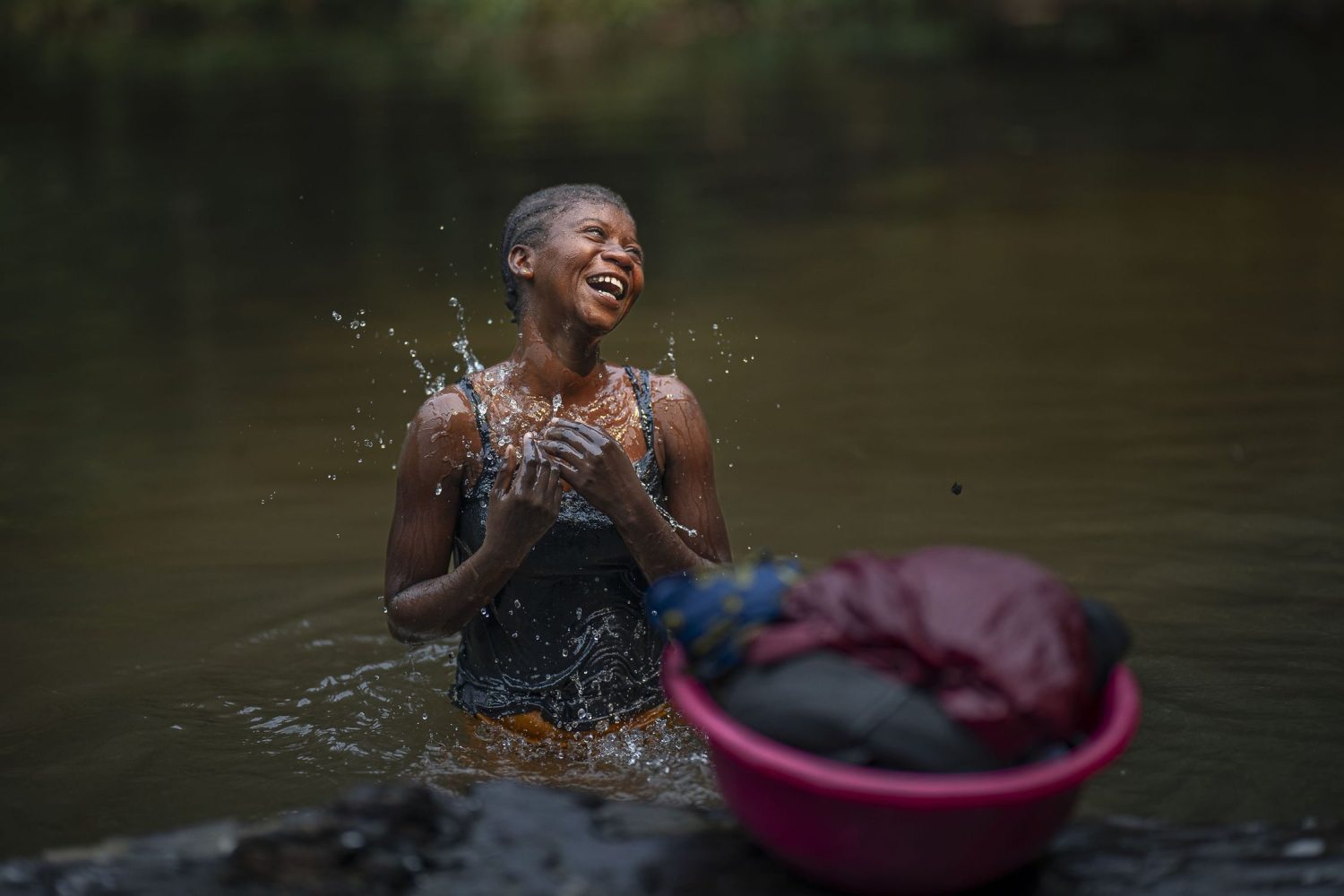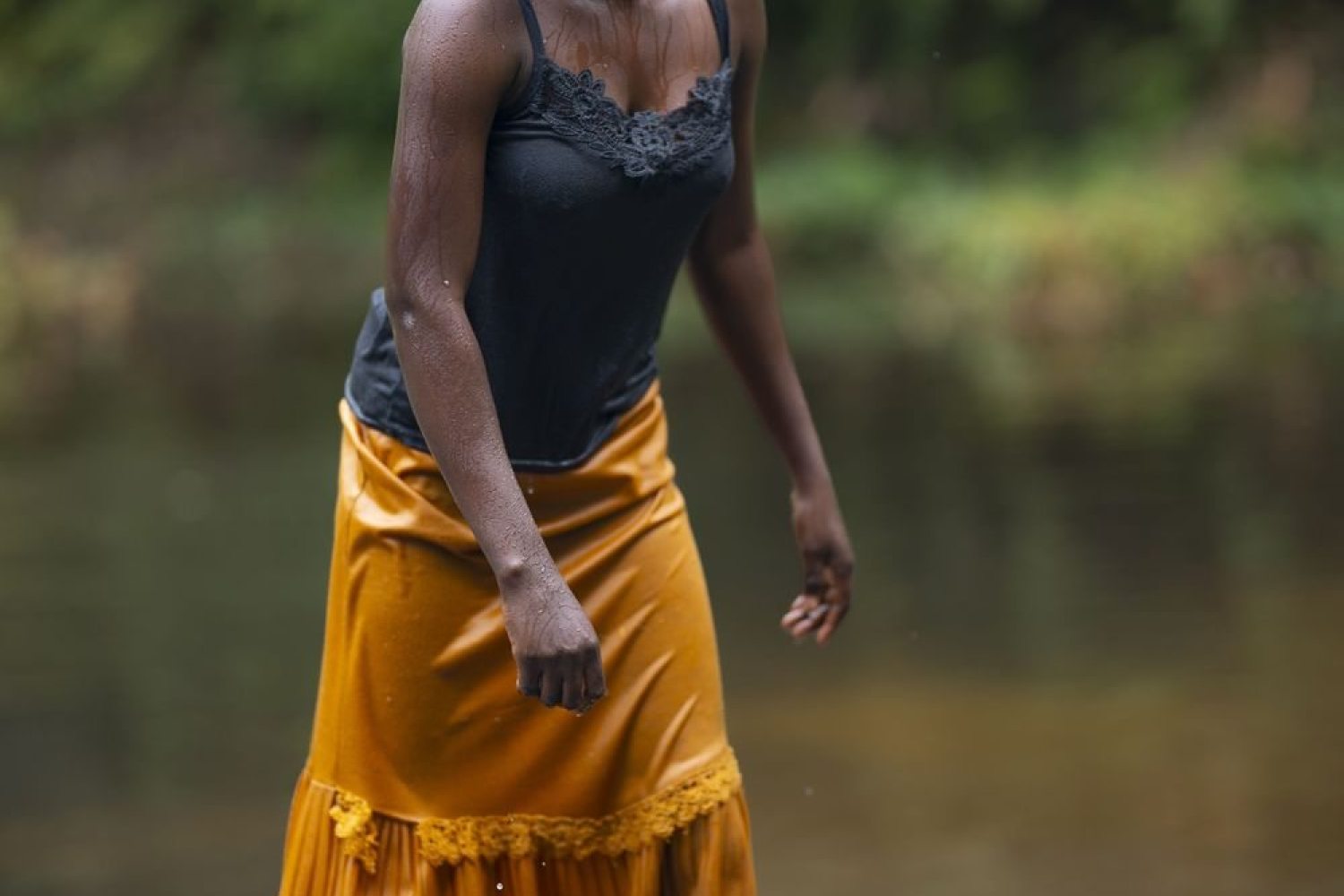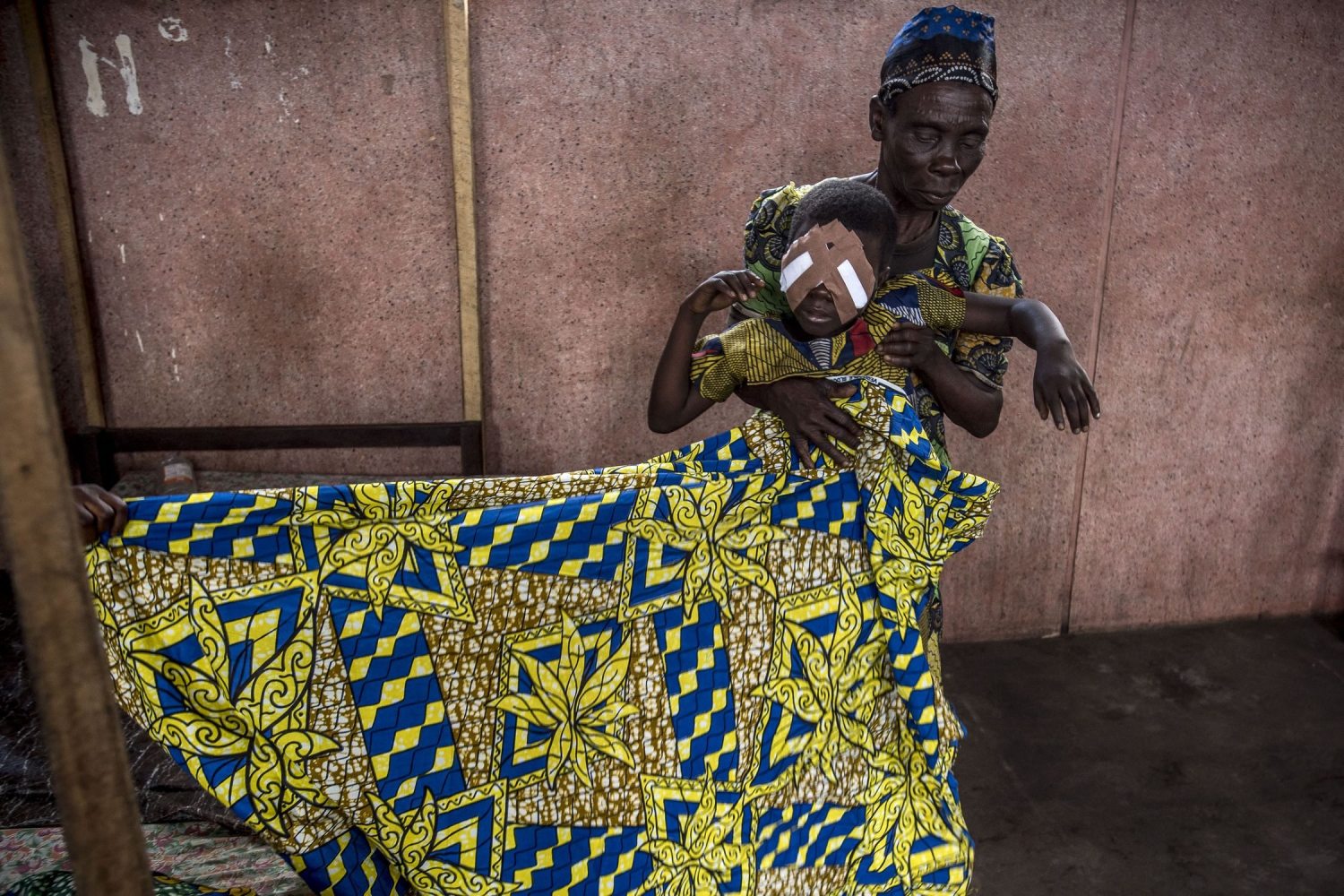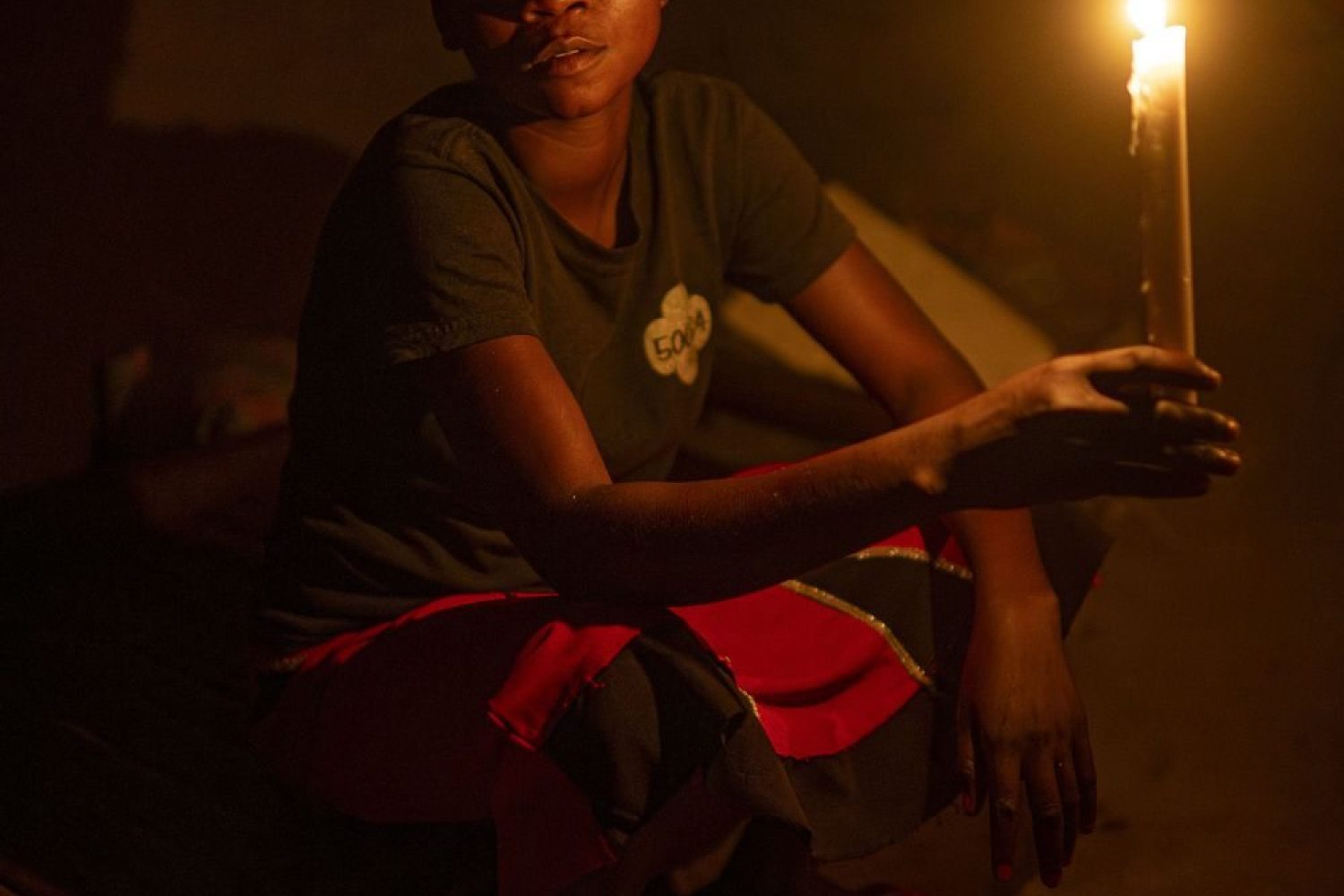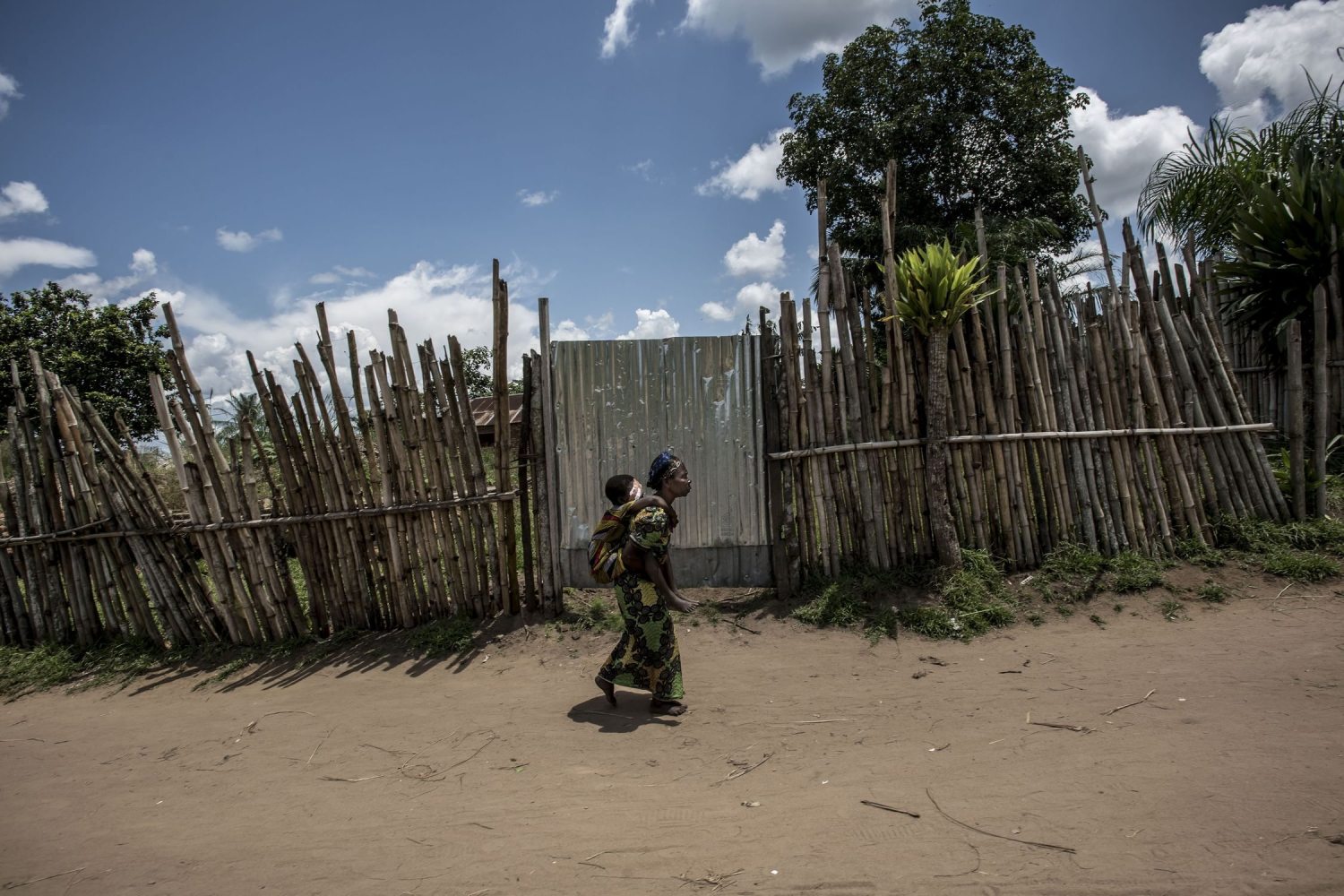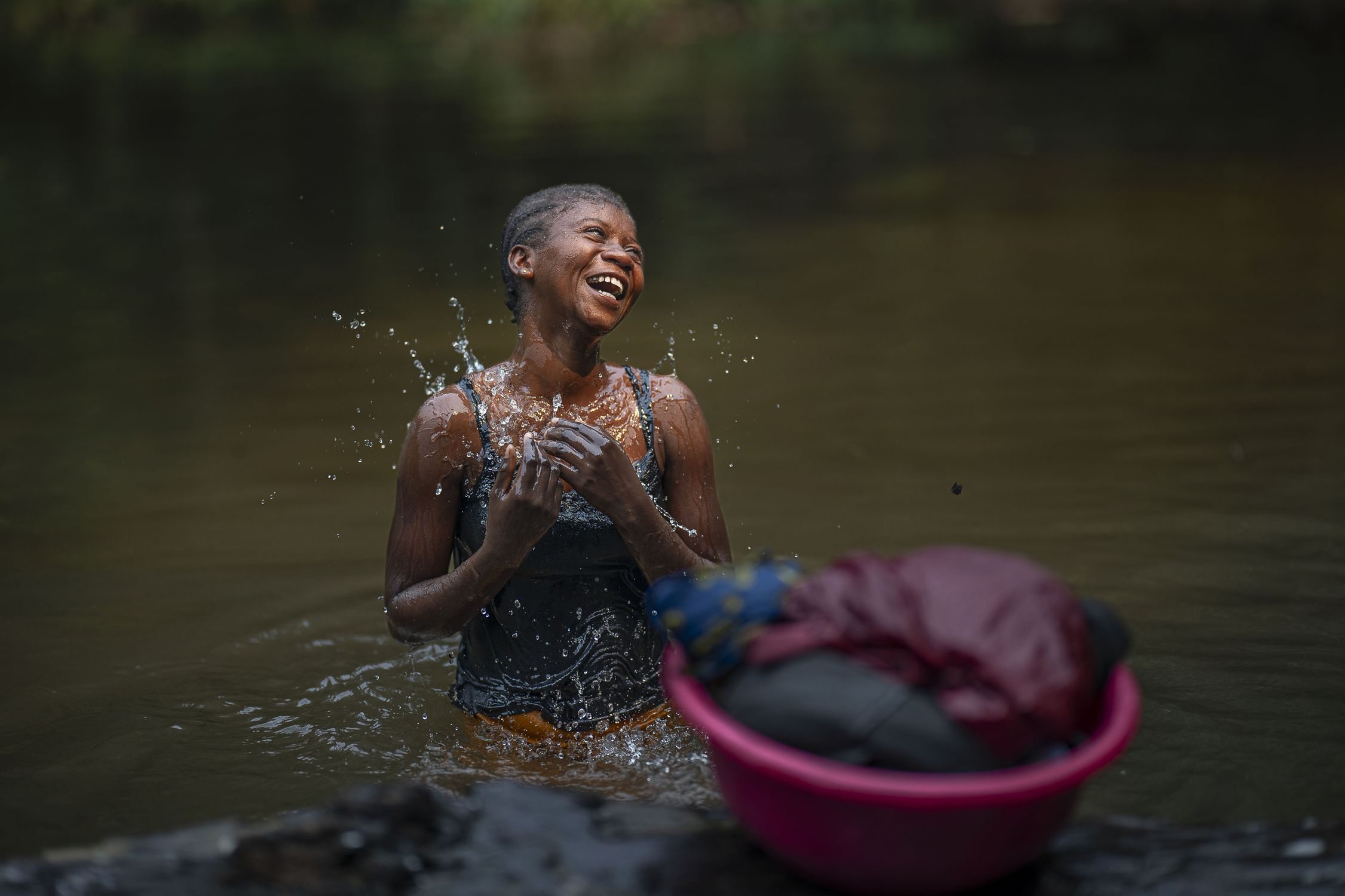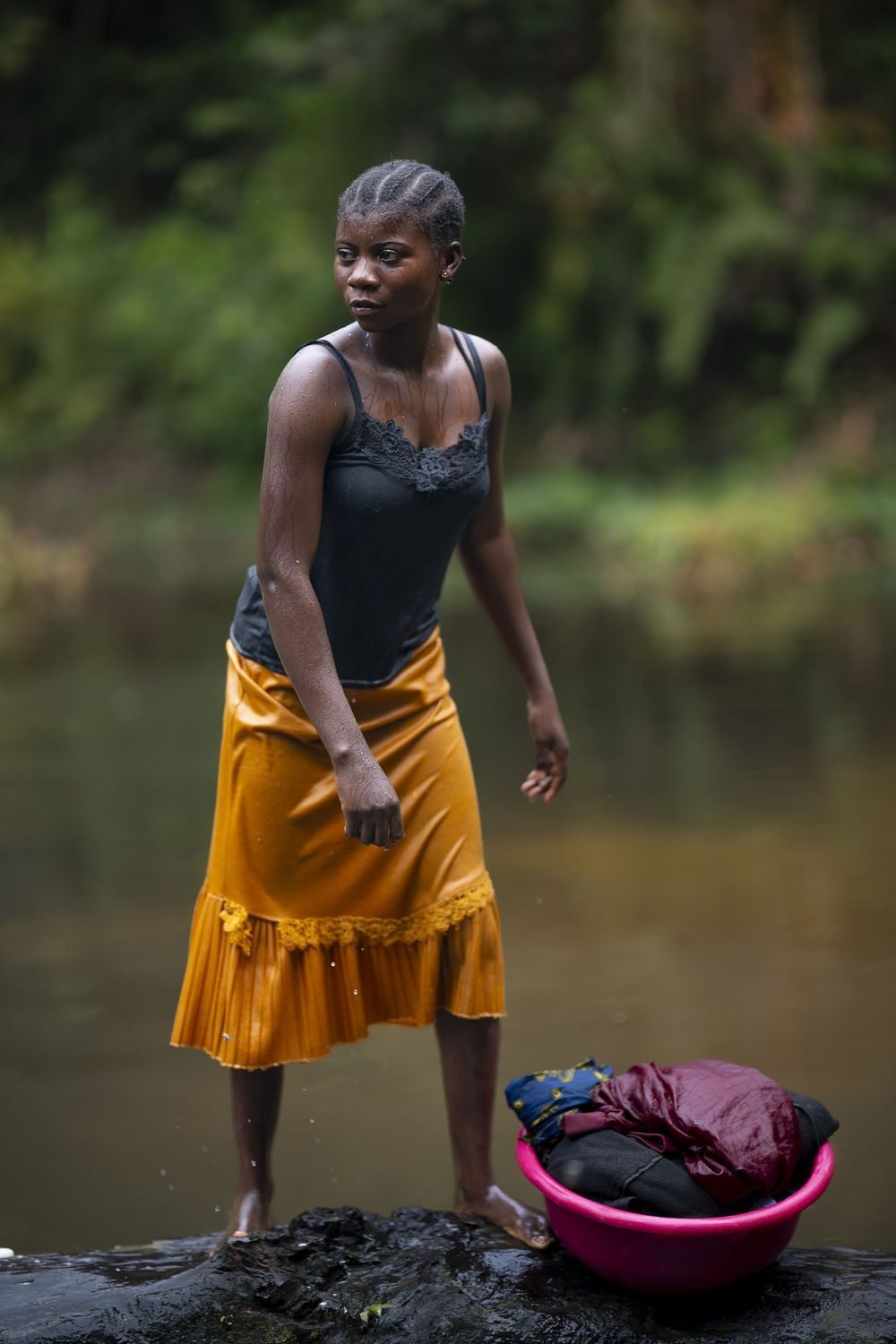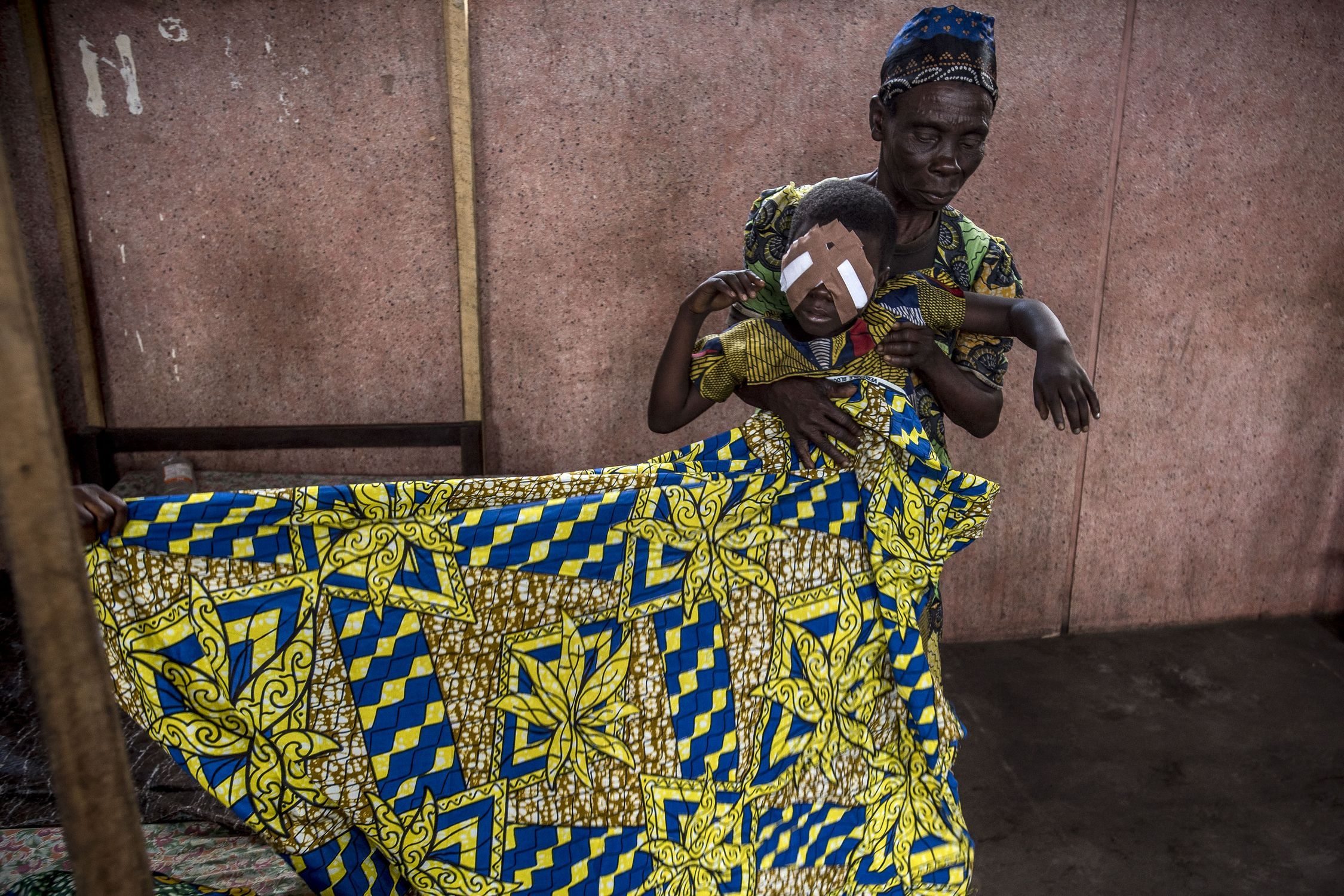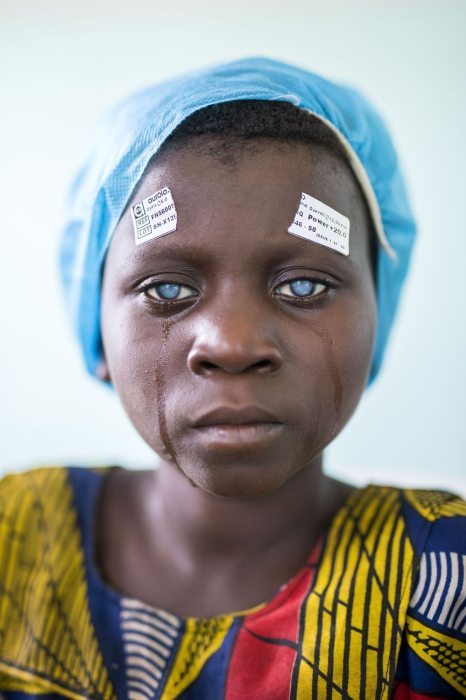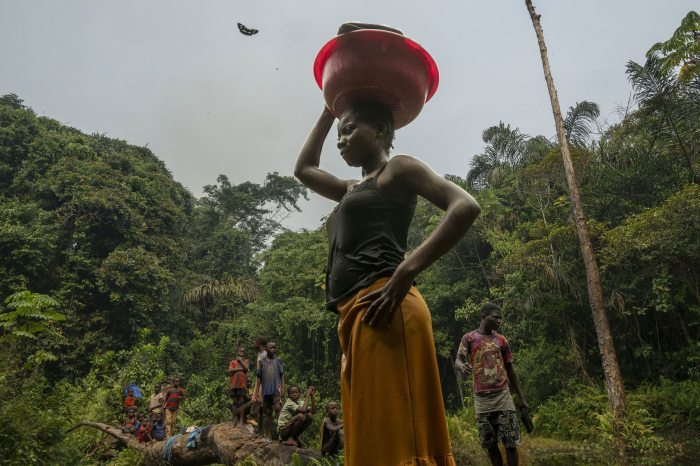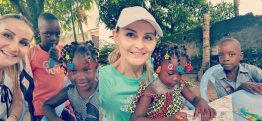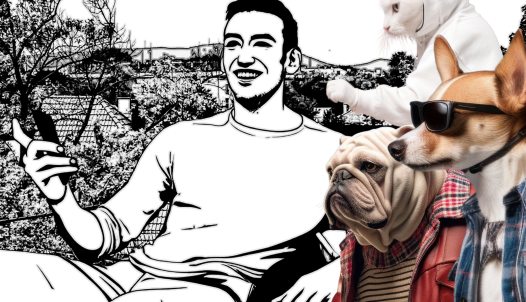The eyesight of a Congolese girl and our sight to the world – Photographer András D. Hajdú is inspired by powerful stories and determined people
András D. Hajdú, a multiple award-winning world-travelling photographer, captures astonishing stories. By his uplifting work, he drew attention to Dr. Richárd Hardi, an ophthalmologist working in the heart of the Congolese rainforest, treating cataract patients for three decades. Thanks to the spotlight, the doctor has now built a modern eye clinic in the Democratic Republic of Congo, and the dedicated photographer has captured one of his recovering patients twice, nine years apart – the first photo made the cover of National Geographic magazine in 2015. Having travelled from Africa to Eastern Europe and beyond for a series of powerful stories, let us take a little trip with András, thanks to an interview by Adrián Szász.
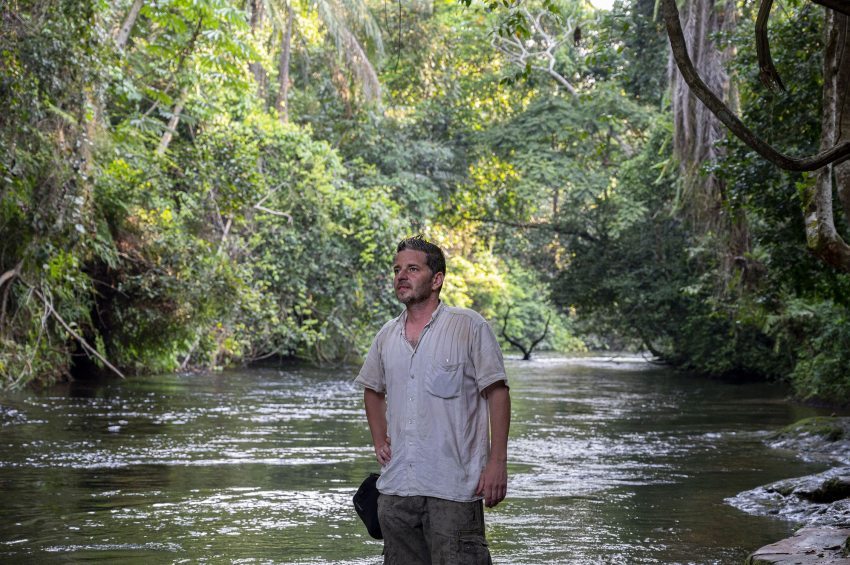
You are a visual storyteller, a documentary photographer: you capture situations and people as they are. What do you need for that?
First and foremost, openness. It's not an easy task, because from the moment you enter a situation, your presence shapes what happens. Just by who you choose as the subject of your photo, what you show of their story, or where you point the camera, you make an impact. You're telling a story with pictures, a bit like if you were a writer.
How do you pick your themes, your story?
Often it's not me looking for the theme, it comes up and finds me. It won’t get out of my mind, almost moves into it. When this happens, I feel a sense of mission: to understand and show why someone goes to work in the Congo for thirty years or asks to be a postman in a slum. I can tell an important story from a half-sentence.
What was the first defining experience that set you on your path, and gave you your calling?
I had quite a tough entrance: when I was 25 or 26 years old, I presented the story of families taking out short-term loans from a financial institution offering small loans.
It was a success, a cover story, I got a scholarship for it, but I also fell flat on my face, because the people I photographed with good intentions were all arrested...
To pay off their loans, they cut down trees and became poachers. Although I blurred their faces, the police identified them and collected them. It was a success and a nightmare at the same time, because it made me realise what an impact I have on people's lives.
Have you never wanted to capture the sunny side of life? Have you always wanted to dive into the deep stuff?
As a photojournalist, I've done a lot of things, including the Olympics in Beijing and cultural festivals. But these have never satisfied me, I always felt there were so many unfair or even shocking things I could deal with. Even at a competition, it's the important stuff that stands out, the stuff that has weight: not the rainbow pony, but the vulture. In Gaza, in Ukraine, tens of thousands of people are dying, while the Olympics are being magnificently captured by thousands of other photographers. That's why I'm interested in the stories that you can't just walk past, the ones that override everything.
Is this what took you – first in 2015 and then three more times – to Congo?
A colleague of mine found an article about the African doctor, but he ended up only travelling there for a few days to meet him. I was more interested than just listening to him tell the story of his life in a café – I wanted to capture the story where it was actually happening. It took time and money, but the doctor finally offered that if I could get to him, he would take care of me during my six-week stay.
How did you cope with the extreme conditions?
A situation like this is full of uncertainty, but until you experience it, it's just a story to you. I've been there four times, which adds up to about six months in the Congo. I've had to get used to the fact that I don't have to do anything there to be exhausted by the end of the day, there's so much stimulation. It's exhausting just to intentionally ignore sounds, smells and influences that are unusual to me.
How much does your presence disrupt the lives of the locals?
On the one hand, they get used to me, on the other hand, they never get used to me. Inner Congo is far away from everything, and my presence disrupts the rhythmic repetition of everyday life. The same thing goes on there every single day, and a child of a few years might never have seen a white person, let alone with a camera, a different language, or a different behaviour.
It's like being the attraction at a zoo, with about a hundred kids flocking around me to watch the " miracle ". A hundred of them stare at me from five meters away, and if I suddenly step to the right, they get so alarmed they fall to the ground.
They don't know what to expect from me: if I move my hand, will I hit them, or just swat away a fly... After days, the interest dies down, but they still sit around me in my hut, finding it interesting even if I just brush my teeth. They giggle when I change my T-shirt, or when I look at my pictures on the screen, and there are always so many curious faces I can't breathe. If I just walk to the toilet and stumble, they laugh.
How do you communicate with the locals?
Often in a funny way. Lingala is a language of 800-900 words, which is very few. There are more than 900 words in Hungarian that have 5 letters, and we have 56 synonyms for the word 'man'. The people in the rainforest don't necessarily understand what I'm asking – if you ask them to tell you about their childhood, they'll say something like "I was little". I've tried interpreters, asking if they've moved, how many houses they've lived in, what a day looks like, if they visit relatives, but mostly it's been yes-no answers. The stories unfold differently there, it is very difficult to get to know them in a complex way. It's almost impossible to do an interview like the one we're doing now...
What did you learn about the Congolese girl, Mbedji, about whom you did the hit cover story for National Geographic, and who you returned to revisit after nine years?
I found out that her parents had died and she had stopped going to school, but she didn't know what they had died of. Illness, she said, but whether it was monkeypox, malaria, or snake bite, I never found out. Her age also remained a mystery. Finally, I wrote down where she lived and the names of some of her relatives, and after nine years I asked Dr Hardi to find her. One of his nurses told her that a white photographer would come to see her. I think they must have thought I was going to marry her... A few months later I arrived and hoped she would be there. Of course, she was there. Where else would she have been unless something had happened to her?
How much did you share with her the exact reason for your visit?
I explained why I had come in front of the whole village, about two hundred people, with the help of an interpreter.
Everyone sat around, and the leader asked questions ceremoniously, like the chief in Winettou. I told him that I had taken photos during previous surgeries and that I would use her example to show the world that people here were getting their sight back, which was a miracle.
I wanted to give them a magazine, but unfortunately, my luggage got lost on the way. It's a pity, because they love paper pictures, but it would have been a three-day drive to the city to get it printed.
How does a perfect photo like the one you took of the Congolese girl this year come about?
With perseverance. I don't mind walking for hours somewhere and then not taking a photo. Here, I shot at least 1200 pictures on the riverbank before I found the main topic somewhere else, and even the butterfly was where it was supposed to be. These miracles either happen or they don't. For the National Geographic cover photo, I was in the hospital every day for two weeks, and on the last day, the little girl came...
It is also thanks to your work that that hospital could be built...
This is a European-standard, billion-euro eye clinic with all the latest equipment. They can operate perfectly on a cataract, a retina or remove a foreign object at any time. Until it was finished, I tried to make the effort visible, and the Hungarian government finally supported it with a million dollars. I am inspired by determined people like Dr. Richárd Hardi.
He is now raising money to build another hospital and a chapel. How important is religion in the lives of Congolese people?
Very. You can't sleep on Sunday, because from five o'clock in the morning, there's so much singing and dancing going on in almost a hundred churches, and there are services going on. Dr. Hardi is also a member of the Community of the Beatitudes, a Catholic community recognized by the Vatican, he moved to the Congo to help 29 years ago and is stuck there. I respect him, because I'm only up for four weeks, true, I usually stay for six, but the last two are a groaner.
I don't just mean your missions to Africa: have you ever been in (life) danger?
In 2022, I spent two months in Ukraine, and I explained to everyone that I wasn't going to go where there was shooting, bombing, or where the front line was because I wanted to report on the people, not the war. I was working for a Swiss NGO and the Norwegian civil service, I didn't go near close combat.
This February, half of the Swiss team I had been with died in a drone attack, the others were taken to hospital...
I don't want to compare it to the war, but it must have been equally dangerous to make a report of the wall of Nagybánya (Baia Mare, Romania) – and the people behind it – that separates an infamous gypsy slum from the city...
It was much more intense, much more dangerous. Once I was attacked by a pack of dogs, another time I had bricks thrown at me from a house, and on yet another occasion I was surrounded by teenage bullies who wanted to rob me of my things. I was lucky to have a cameraman and an interpreter with me, who the boys didn't see at first, but as soon as they turned up and there were three of us, the kids disappeared. The worst thing is to work in a place where there is no control over people, where they know you don't stand a chance against them. If I had been hurt in the Congo, the authorities would have caught the guy in no time, but in Nagybánya they would never have found out who had hit me on the head. They didn't even care why I was there, they looked at me as the umpteenth correspondent, and my predecessors had already established public opinion...
Now you are working (besides others) on a less dangerous but more profound project, the story of Szofi.
For many years I photographed topics related to gypsies, but I could only tell bits and pieces of a story, never the whole one. That's where the idea came from: what if I followed someone from the beginning, even from before they were born, if I showed the story through one person, not through the fate of many families. That person became Sophie, born into a disadvantaged family, and is now eight years old, and I am documenting her growing up. After a break of a couple of years, I photographed her again this year on her birthday, but as she is now in foster care, I agreed with them not to publish the material until she was 18. So time will play a big role in this project, as it is always an important factor for me anyway.
You can follow the stories of photographer András D. Hajdú on the following online platforms:
Website
Facebook page
Instagram page
